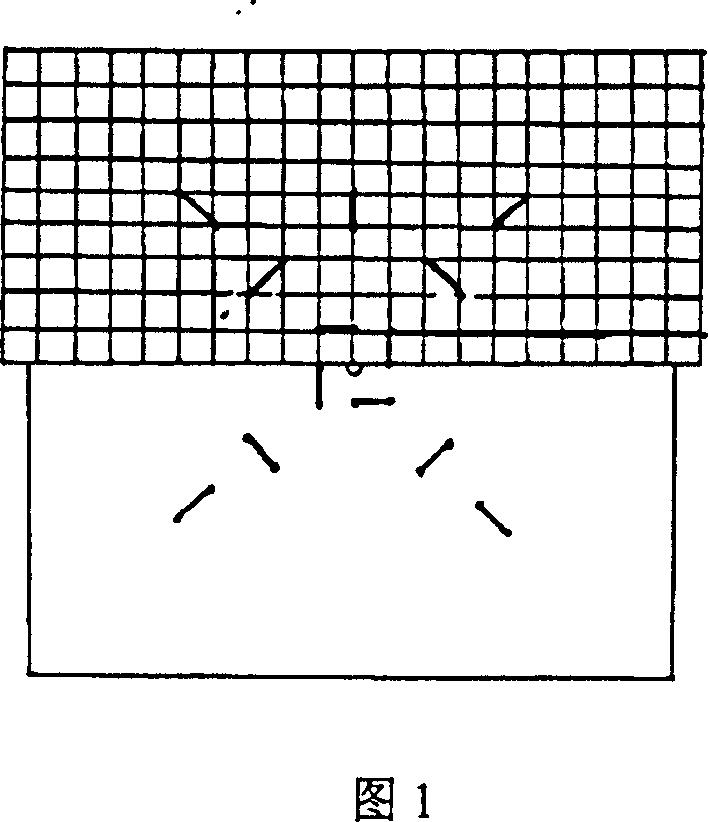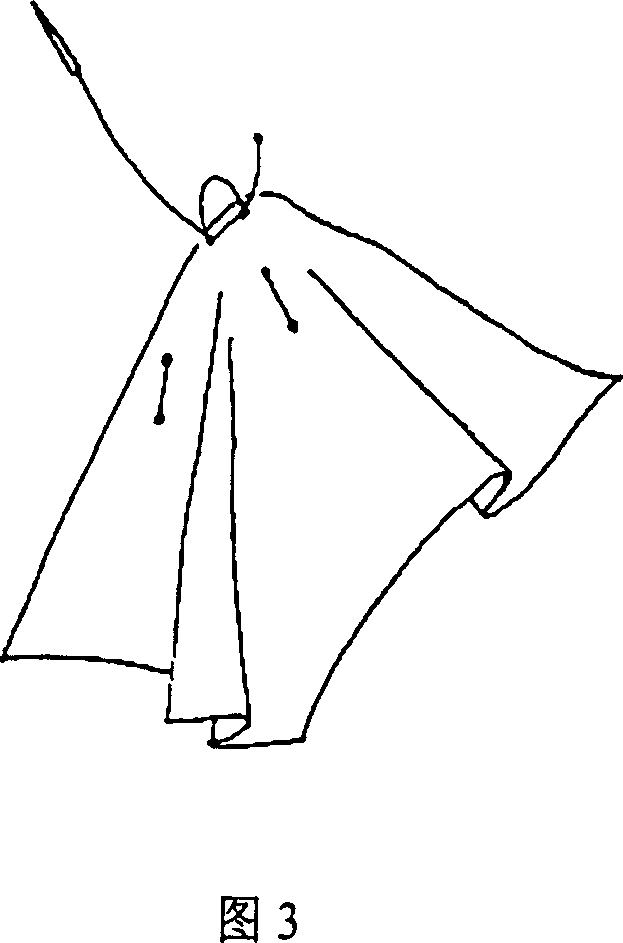Soft relief process using in textile
A process method and fabric technology, applied in the field of soft relief technology, can solve the problems that are rarely used in home decoration, and the decorative effect is limited.
- Summary
- Abstract
- Description
- Claims
- Application Information
AI Technical Summary
Problems solved by technology
Method used
Image
Examples
Embodiment 1
[0039] A kind of soft embossing method for fabric shown in Fig. 1~4 is one of the embodiment of the present invention, and its concrete technology comprises the following steps:
[0040] (1) Make a paper pattern with the designed fabric size as the outline, set a virtual center point in the middle of the fabric, draw a grid with the same unit grid on the paper pattern, and mark it on the grid according to the needs of the design style Several points for stitching (see Figure 1), the two points to be stitched together in the illustration are connected by a straight line to form a line segment.
[0041] As shown in Figure 2, several suture groups form three virtual circles a, b, and c, among which there are four suture groups marked on the two virtual circles a and b respectively, and the suture groups on the second virtual circle are respectively two different diameters. The tangent line on the circle, the tangent point on the a virtual circle is respectively an end point on th...
Embodiment 2
[0045] A method for soft relief on fabrics is shown in Figure 5 and Figure 6 in the second embodiment of the present invention, which is to make triangular soft relief patterns on fabrics. The difference from the previous embodiment is that the cloth is a polygon formed by cutting off three corners of an equilateral triangle. On the paper pattern, a central point set in the middle of the cloth is used as the center of the circle, and each stitching group is connected by a straight line to form a Polyline (see Figure 5), the three points to be stitched together in the illustration form a stitching group, and several stitching groups form two virtual circles with the center point as the same center, below the virtual circle near the center point It is called the inner circle, and the virtual circle far away from the center point is called the outer circle hereinafter. Three suture groups are respectively arranged on the two virtual circles. On the bisector of the angle, the rema...
Embodiment 3
[0048] A specific embodiment of a soft relief process method used on fabrics is shown in Figure 7 and Figure 8, which is to make nested square soft relief patterns on fabrics. The difference from Example 1 is that at first the four corners of the concentric large and small two imaginary square circles are respectively marked on the paper pattern, and each corner is formed with a broken line formed by three points to form a sewing group mark, and there are four For the suture groups in the form of folded lines, each pair of suture groups is distributed symmetrically with the center point of the square as the symmetrical base point, and two pairs of suture groups are distributed on each of the two virtual circles, and they are respectively located on the two diagonals of the virtual square.
[0049] Use an awl to pierce a group of stitching points of the folded line pattern on the paper pattern to form small holes; spread the pattern on the reverse side of the fabric, mark the co...
PUM
 Login to View More
Login to View More Abstract
Description
Claims
Application Information
 Login to View More
Login to View More - R&D
- Intellectual Property
- Life Sciences
- Materials
- Tech Scout
- Unparalleled Data Quality
- Higher Quality Content
- 60% Fewer Hallucinations
Browse by: Latest US Patents, China's latest patents, Technical Efficacy Thesaurus, Application Domain, Technology Topic, Popular Technical Reports.
© 2025 PatSnap. All rights reserved.Legal|Privacy policy|Modern Slavery Act Transparency Statement|Sitemap|About US| Contact US: help@patsnap.com



